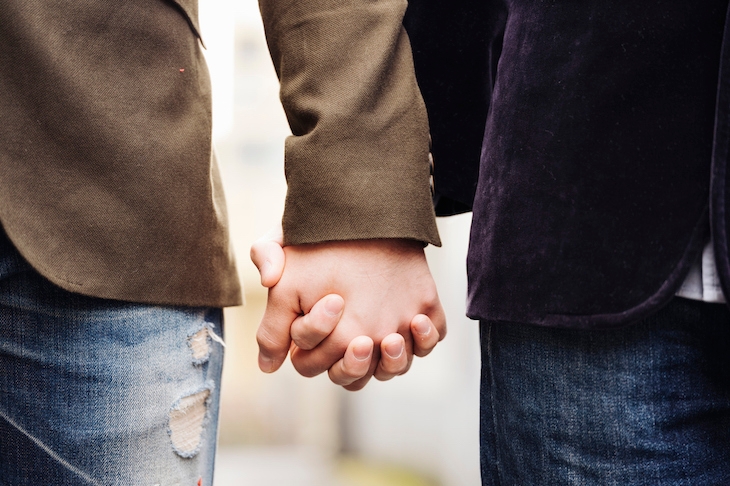On June 7th of this year, five teenagers were arrested in connection with a homophobic attack on two women on a London bus. It was an extremely heinous incident, and prompted widespread condemnation across the UK. But though the crime was grotesque, disingenuous outlets have since used the incident to promote a nefarious idea: that members of the LGBT community are under constant attack, quite literally.
Over the weekend, the Guardian published a piece of analysis that said ‘Homophobic and transphobic hate crimes have more than doubled in England and Wales over five years.’ The report, which used Home Office and police force statistics, revealed that the ‘rate of LGBT hate crime per capita rose by 144 per cent between 2013-14 and 2017-18. In the most recent year of data, police recorded 11,600 crimes, more than doubling from 4,600 during this period.’ And it arrived at the shocking conclusion, that ‘transphobic attacks have soared in recent years, trebling from 550 reports to 1,650 over the period examined. Almost half (46 per cent) of these crimes in 2017-2018 were violent offences, ranging from common assault to grievous bodily harm.’
The article was replete with flashy graphs and dramatic language, but had far less information about the methodology used by the paper, and seemed to lack real scientific rigour. In fact, there has been a dramatic change in society: in the way ‘hate crimes’ against non-heterosexuals are recorded by the police, and the public’s willingness to report ‘hate crimes’ to them. Could it be that the actual rates of actual violence have not risen, but the perception of violent acts has?
According to Greater Manchester Police’s webpage:
‘A hate crime is defined as any criminal offence which is perceived by the victim or any other person, to be motivated by hostility or prejudice based on a person’s race or perceived race; religion or perceived religion; sexual orientation or perceived sexual orientation; disability or perceived disability and any crime motivated by hostility or prejudice against a person who is transgender or perceived to be transgender.’
The word ‘perceived’ appears six times. In practice, this means that any incident which is perceived to be motivated by hate can be classified as a ‘hate crime’ by the police, no matter how serious the offence is. In the Guardian report, even the LGBT campaigners quoted acknowledge that the way police record crimes is probably a major reason for this spike in incidents against non-heterosexual people.
There is a reason the recent homophobic attack on the bus was so shocking. Because in the UK, attacks like this are so rare. The attack on the bus struck such a chord with people around the world because it was an outlier, a freak occurrence.
A recent survey carried out by the British government, the results of which were published in February of this year, show that ‘just’ two per cent of non-heterosexuals have been on the receiving end of actual, physical violence. A quarter of respondents, meanwhile, had experienced verbal harassment, including ‘insensitive comments’. Again, hurtful comments can be awful. Nevertheless, a report that equates hurtful comments with acts of physical violence is both misleading and dishonest.
Another analysis, meanwhile, carried out in 2018 by researchers at the University of Manchester, painted a far less dystopian picture of the UK too. These researchers concluded that British society appears to have reached ‘peak’ LGBT acceptance. According to the research team, a series of changes to the law including the equalisation of the age of consent in 2001, the repeal of Section 28 two years later and the legalisation of same-sex marriage in 2013 have given LGBT members equality in the eyes of the law. Of course, equality in the eyes of the law is not the same as mainstream acceptance. But the researchers also noted that the legal changes have happened alongside a marked shift in society’s attitude towards non-heterosexuality, which has become far more accepting. In fact, as the data shows, society has never been more accepting. Though British society has not reached blanket approval level, and probably never will, this report paints a far more accurate picture of today’s state of affairs.
Despite the headlines warning people that danger awaits them at every turn, there has never been a safer time to be alive. One crime, albeit a gruesome one, should not be used to depict British society as a hotbed of uncivilised monsters whose sole purpose in life is to target non-heterosexuals. A single horrible incident carried out by a number of teenagers is not representative of the UK.






Comments